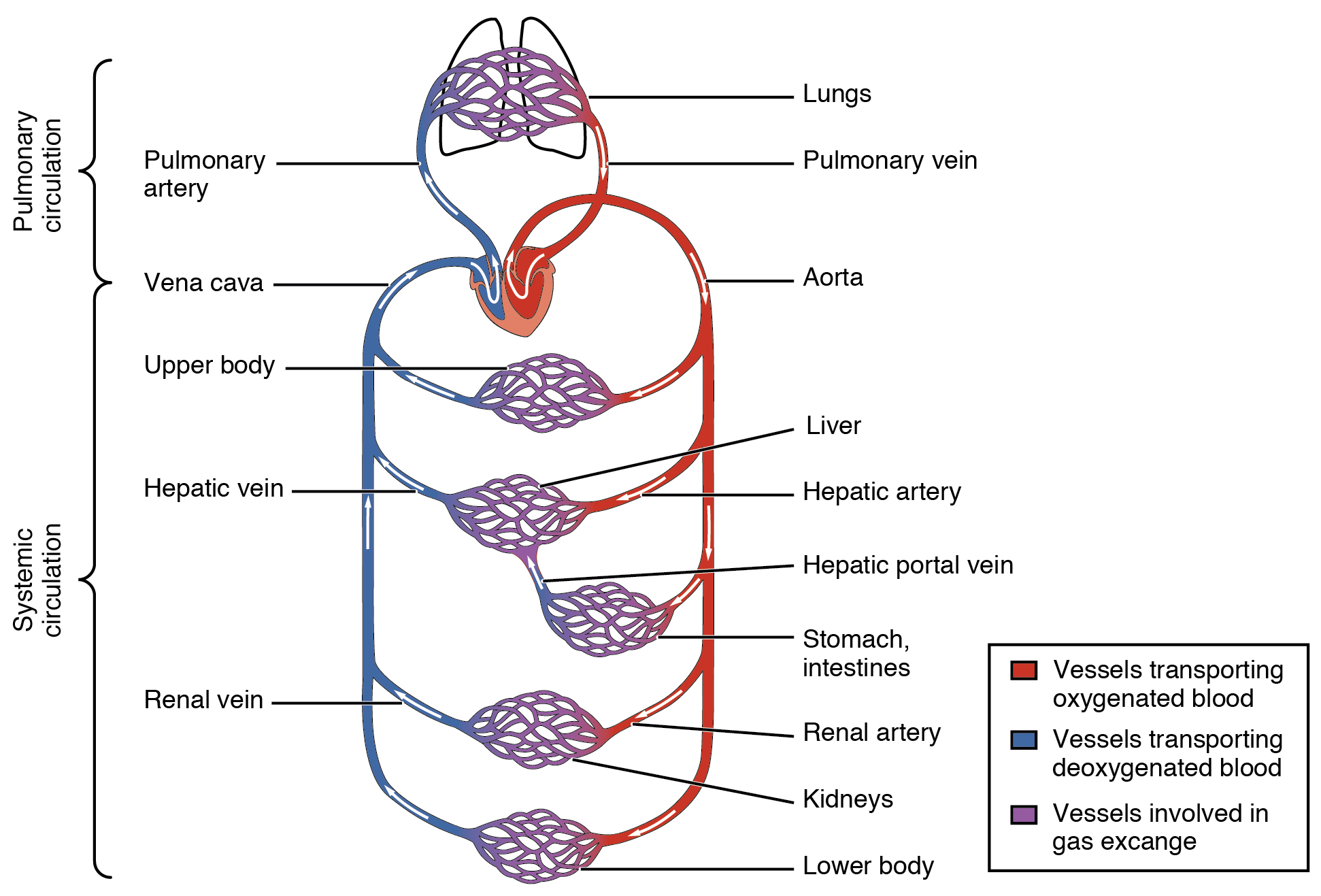What Best Describes the Flow of Blood in Systemic Circulation
Blood flow in the systemic system moves from the heart through the arteries to the arterioles to the capillaries to the capillary beds. After moving through the pulmonary circuit oxygen-rich blood in the left ventricle leaves the heart via the aorta.

Systemic Circulation An Overview Sciencedirect Topics
From the tissue capillaries the deoxygenated blood returns through a system of veins to the right atrium of the heart.

. From the Heart. The systemic circulation in which blood flows between the heart and lungs and the pulmonary circulation in which blood flows between the heart and the rest of the body. Click to see full answer.
Blood then flows from both upper atriums left atrium and right atrium into the two lower chambers left and right ventricles which then expand. Blood circulation from the_____ Please guys help me 1 See answer Advertisement Advertisement mckaku7777 mckaku7777 Answer. Herein what is the pathway of systemic circulation.
It is initiated by the contraction of the ventricles of the heart. Passage or transmission from person to person or place to place especially. 1 body 2 inferiorsuperior vena cava 3 right atrium 4 tricuspid valve 5 right ventricle 6 pulmonary arteries 7 lungs 8 pulmonary veins 9 left atrium 10 mitral or bicuspid valve 11 left ventricle 12 aortic valve 13 aorta 14 body.
Systemic circulation carries oxygenated blood from the left ventricle of the heart to the rest of the body by the aorta. Which of the following best describes systemic circulation. Systemic circulation in physiology the circuit of vessels supplying oxygenated blood to and returning deoxygenated blood from the tissues of the body as distinguished from the pulmonary circulation.
The system of blood vessels resembles a tree. It consists of the heart and the blood vessels running through the entire body. Blood flow is a cycle that involves your lungs heart chambers valves and blood vessels.
Pulmonary circulation carries deoxygenated blood from the right ventricle of the heart to the lungs through the pulmonary artery. The flow of blood into the right atrium and eventually out of the left ventricle. The trunk the main artery aorta branches into.
The circulatory system of humans is composed of two loops. The veins carry it back to the heart. The coronary arteries are the only vessels that branch from the ascending aorta.
The oxygenated blood then flows back to the heart. Systemic circulation carries oxygenated blood from the left ventricle through the arteries to the capillaries in the tissues of the body. The arteries capillaries and veins of the systemic circulatory system are the channels through which this long journey takes place.
From the tissue capillaries the deoxygenated blood returns through a system of veins to the right atrium of the heart. D blood flow to and from the cells and tissues of the body but not. Systemic circulation starts with the heart pumping oxygenated blood from the left ventricle to the aorta then through the arteries and capillaries it is transported to different tissues in the body.
That action pushes blood through the two chambers on the right side of your heart and out to the lungs where it gathers oxygen. In the systemic circulation blood travels out of the left ventricle to the aorta to every organ and tissue in the body and then back to the right atrium. In summary from the video in 14 steps blood flows through the heart in the following order.
Orderly movement through a circuit especially. Blood circulation from the_____ - 6789582 irenasim138 irenasim138 11112020. The interchange of currency coins in circulation.
Blood circulation from the heart to the rest of the body except the. It transports deoxygenated blood to the lungs to absorb oxygen and release carbon dioxide. The movement of blood from the pulmonary trunk through capillaries into the pulmonary veins.
The systemic circuit is the path of circulation between the heart and the rest of the body excluding the lungs. Blood is pumped from the left ventricle of the heart through the aorta and arterial branches to the arterioles and through capillaries where it reaches an equilibrium with the. The blood circulatory system cardiovascular system delivers nutrients and oxygen to all cells in the body.
Blood is then ejected ejection phase when the ventricles contract and pump the blood into the arteries. B blood flow to and from the cells and tissues of the heart only. C blood flow to and from the cells and tissues of the lungs only.
Systemic circulation moves blood between the heart and the rest of the body. The Path of blood through the Circulatory System. The movement of blood through the vessels of the body induced by the pumping action of the heart.
The arteries carry blood away from the heart. Ventricular contraction ejects blood into the major arteries. Blood circulation begins when the heart relaxes between heart beats.
Deoxygenated blood from tissues is carried back to the. Electrical pulses make your heart muscles squeeze and release. A blood flow to and from the cells and tissues of the brain only.
Discuss several factors affecting blood flow in the venous system. Blood flow refers to the movement of blood through a vessel tissue or organ and is usually expressed in terms of volume of blood per unit of time. So the answer will be A hope this helps.
Systemic circulation carries oxygenated blood from the left ventricle through the arteries to the capillaries in the tissues of the body. Answered Which of the following best describes systemic circulation. Science Biology QA Library Which of the choices below best describes the systemic circulation of blood.

What Is The Path Of Blood Through The Circulatory System

Structure And Function Of Blood Vessels Anatomy And Physiology


Comments
Post a Comment